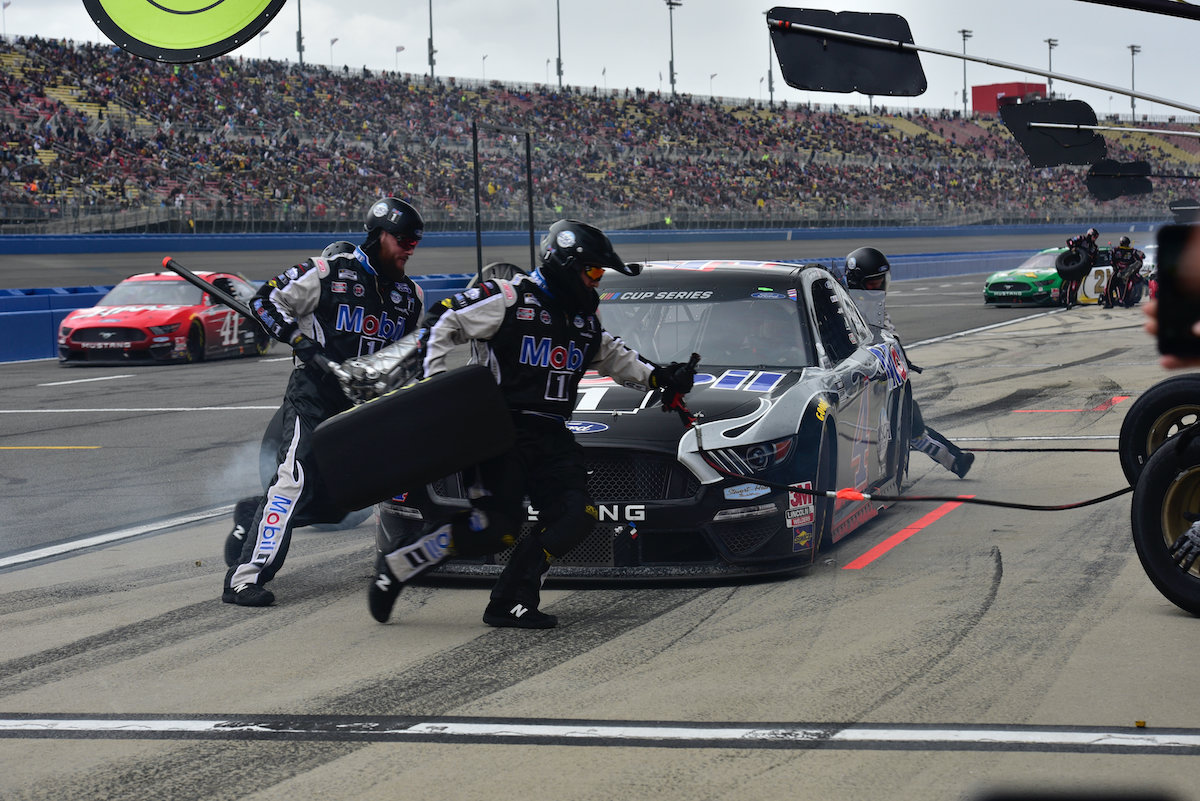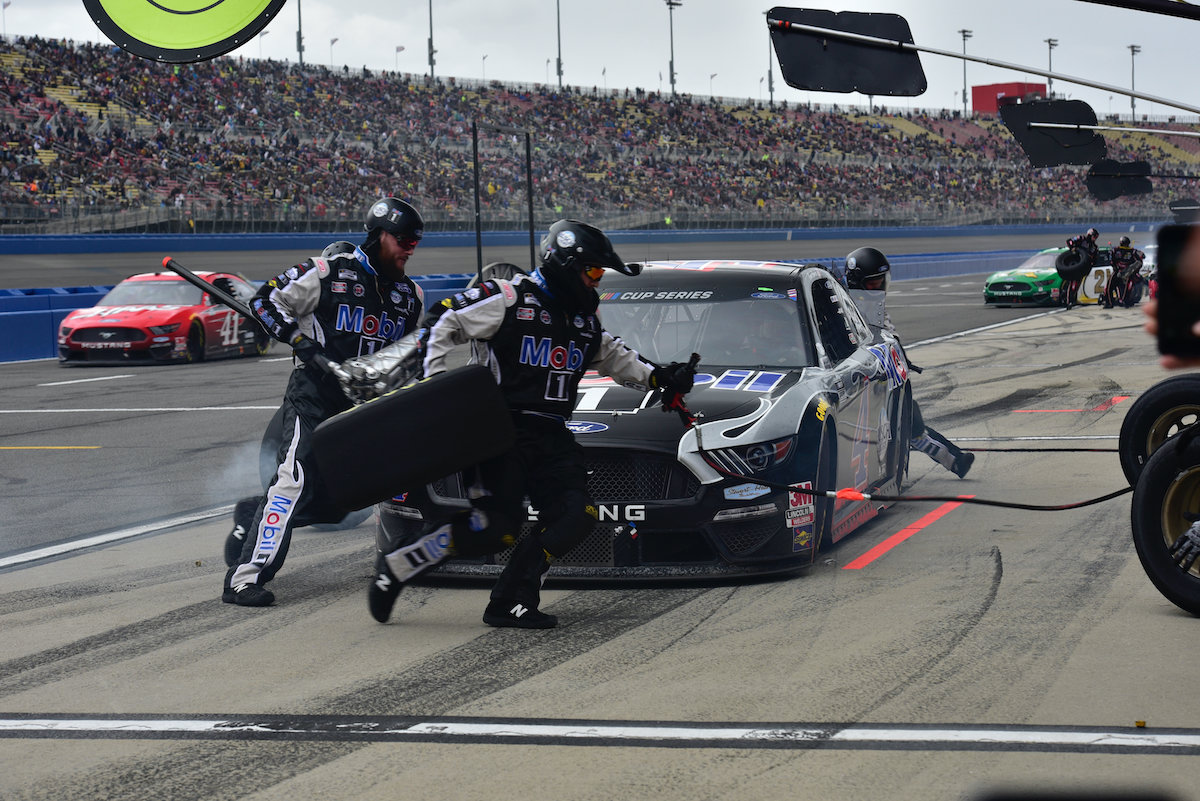
What Are the Roles of NASCAR Pit Crew Members?
To an observer, a NASCAR pit crew looks like a furious flurry of activity. A pit stop happens so quickly during a NASCAR race that no one would blame someone who doesn’t know what’s going on. But if you look closely, there’s a method to any pit crew‘s perceived madness. Each person has a specific role that must be performed with perfect timing.
Let’s look inside a NASCAR pit crew — the various roles of the members as well as the rules they must abide by.
The roles of pit crew members
Think of a pit crew like an orchestra: Each person has a different yet crucial role to play. One wrong move and it can devastate the entire team’s performance. When all components work in harmony, they help the driver achieve success.
Much like baseball umpires, the outside world really only notices a pit crew when they make a mistake. What they do is critical in enabling the drivers to go as fast as possible. AAMCO Colorado outlined the pit crew positions. Here’s what a typical crew consists of:
- Tire changers: They’re tasked with changing the tires.
- Tire carriers: These people carry the replacement tires.
- Jackman: Usually the strongest member of the team puts the car on a jack for the tire change.
- Gasman: Like tire changers, this role is exactly what you’d think. The gas man refills the car with gas.
- Catch can man: This position is tasked with catching excess gas and making sure it ends up in the tank.
- Window tear-off: When there’s bad weather, a plastic covering can be put onto the car’s windshield. This position is responsible for that covering.
- Tire catchers: These people are tasked with catching the tires taken off the car before new ones are put on.
- Spotter: The spotter sits high above the track, monitoring the race and relaying any potential surprises to the driver.
- Crew chief: The crew chief is like the pit crew’s head coach. They instruct the driver and direct traffic among the pit crew members.
- Technologist: This position is dedicated to measuring the car’s aerodynamic properties to ensure it can perform optimally.
- Meteorologist: The team meteorologist monitors the weather and determines how that may impact racing conditions on the day in question.
Rules for pit crew members
NASCAR has many rules in place to govern how the pit crews interact with drivers. Because it’s such a precise skill set and set of operations to perform, these rules can make or break a crew; they can mean the difference between winning and losing. Hot Cars compiled a few of the formal and informal rules that apply to pit crews.
To level the playing field between big-money teams and teams with fewer financial resources, NASCAR has strict rules about who can go over the wall during a race. Only five members of the crew are allowed over the wall. Each crew member must perform their own set of duties.
More informal rules surrounding pit crew members involve being nimble and athletic. This is why many crews recruit athletes to the position rather than mechanics. They figure it’s easier to train someone who’s athletic rather than it is to get an auto expert in better shape.
The evolution of pit crews

In 2018, NASCAR lowered the number of pit crew members allowed over the wall — in the past it had been six and now it’s five. Another big change came in 2002, when NASCAR began requiring helmets following the tragic death of Dale Earnhardt Sr.
So how much do these specialists make? It depends on many factors including the position as well as the team and driver. Sportekzreports that a NASCAR crew chief can make between $200,000 and $1 million a year. Other members of the crew can make anywhere from $500-$3,000 per race. It’s not a bad living, but it’s hardly an easy job, either.


